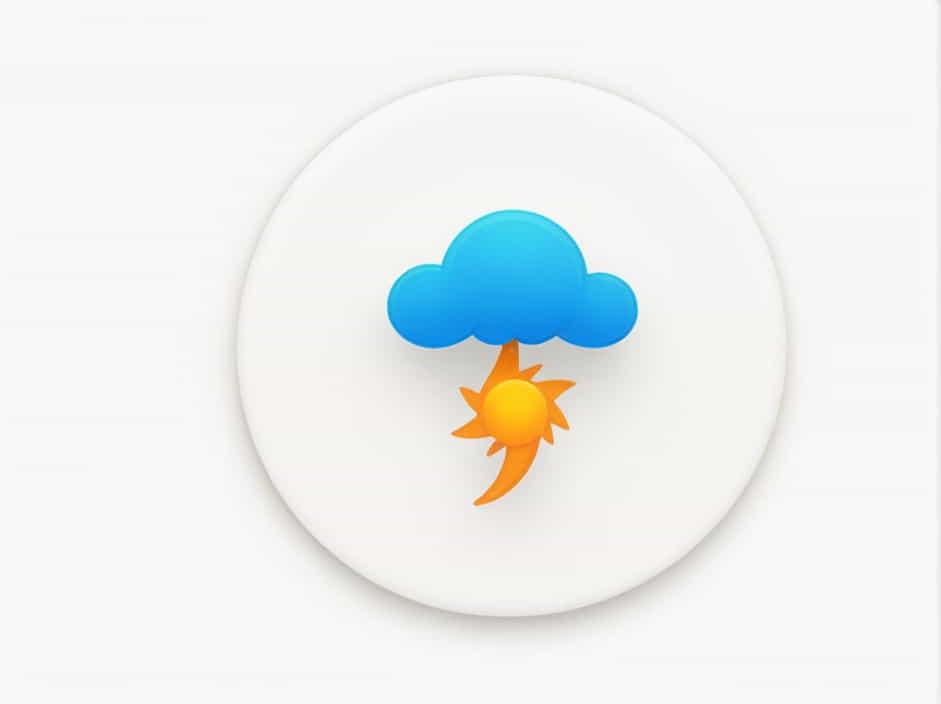Pressure cells play a crucial role in weather forecasting and climate studies. In a synoptic weather map, high and low-pressure systems help meteorologists understand and predict atmospheric conditions. These maps provide valuable insights into temperature patterns, wind direction, and precipitation.
Understanding pressure cells is essential for interpreting weather changes, from clear skies to severe storms. This topic explores high and low-pressure systems, their formation, and their impact on global weather patterns.
What Are Pressure Cells?
Pressure cells are large-scale areas of high or low atmospheric pressure. They influence wind patterns, cloud formation, and precipitation. On a synoptic weather map, pressure cells are represented by isobars, which are lines connecting points of equal atmospheric pressure.
There are two main types of pressure cells:
- High-pressure systems (anticyclones)
- Low-pressure systems (cyclones)
Each type of pressure cell affects the weather differently and plays a significant role in climate dynamics.
High-Pressure Systems (Anticyclones)
Definition and Characteristics
A high-pressure system, or anticyclone, is an area where the atmospheric pressure is higher than the surrounding areas. On a weather map, it is represented by the letter “H” and is surrounded by isobars indicating a gradual decrease in pressure outward from the center.
Formation of High-Pressure Cells
High-pressure cells form when air sinks and compresses, leading to stable and dry conditions. These systems often develop due to:
- Cold air masses descending from the upper atmosphere.
- Cooling of surface air, especially in winter.
- Large-scale subsidence in the atmosphere, such as in subtropical regions.
Weather Associated with High-Pressure Systems
High-pressure systems typically bring:
- Clear skies and sunny weather due to sinking air preventing cloud formation.
- Calm or light winds, as air moves outward from the high-pressure center.
- Dry conditions, leading to droughts in some regions.
- Cold temperatures in winter, as heat escapes at night under clear skies.
Examples of High-Pressure Systems
- Subtropical Highs – Found near 30° latitude, creating deserts like the Sahara and Atacama.
- Siberian High – A strong winter system causing extreme cold in Eurasia.
- Blocking Highs – Prolonged high-pressure areas that can lead to heatwaves or cold spells.
Low-Pressure Systems (Cyclones)
Definition and Characteristics
A low-pressure system, or cyclone, is an area where atmospheric pressure is lower than surrounding areas. It is marked by the letter “L” on synoptic weather maps. Isobars surrounding a low-pressure cell indicate pressure decreasing toward the center.
Formation of Low-Pressure Cells
Low-pressure systems form when air rises and cools, leading to cloud development and precipitation. Factors influencing their formation include:
- Surface heating, causing warm air to rise.
- Converging winds, forcing air upward.
- Tropical disturbances, such as hurricanes and typhoons.
Weather Associated with Low-Pressure Systems
Low-pressure systems typically bring:
- Cloudy and stormy conditions, due to rising air leading to condensation.
- Strong winds, as air moves inward toward the low-pressure center.
- Heavy rainfall or snowfall, depending on temperature conditions.
- Tropical storms and cyclones, when forming over warm ocean waters.
Examples of Low-Pressure Systems
- Tropical Cyclones – Hurricanes and typhoons forming over warm oceans.
- Mid-Latitude Cyclones – Common storm systems in temperate regions.
- Monsoonal Lows – Bringing seasonal rain to Asia and Africa.
Interpreting Pressure Cells on a Synoptic Weather Map
A synoptic weather map provides a snapshot of atmospheric pressure patterns. Understanding pressure cells helps in predicting weather changes.
Key Features to Observe
- Isobars – Closely spaced lines indicate strong winds, while widely spaced lines suggest calm conditions.
- Pressure Gradients – Steeper gradients lead to stronger winds.
- Fronts – Cold and warm fronts associated with low-pressure systems bring storms and temperature changes.
- Wind Direction – Winds circulate clockwise around high-pressure systems and counterclockwise around low-pressure systems in the Northern Hemisphere (opposite in the Southern Hemisphere).
Weather Patterns Based on Pressure Cells
- Approaching a Low-Pressure System – Expect increasing cloud cover, stronger winds, and possible storms.
- Moving Toward a High-Pressure System – Expect calmer weather with clear skies.
- Rapid Pressure Drops – Indicate severe storms or cyclonic activity.
- Slow Pressure Changes – Suggest stable and persistent weather conditions.
How Pressure Cells Influence Global Climate
High-Pressure Systems and Climate
- Desert Formation – High-pressure cells in the subtropics lead to arid climates.
- Cold Weather in Winter – Arctic high-pressure systems cause cold waves and frost.
- Heatwaves in Summer – Stagnant high-pressure cells lead to extreme heat events.
Low-Pressure Systems and Climate
- Storm Formation – Low-pressure areas cause frequent storms and hurricanes.
- Wet Climates – Equatorial low-pressure zones contribute to tropical rainforests.
- Seasonal Monsoons – Low-pressure development drives heavy seasonal rains in parts of Asia and Africa.
Impact of Climate Change on Pressure Cells
With global warming, pressure cells are shifting, leading to:
- More intense storms due to stronger low-pressure systems.
- Prolonged droughts as high-pressure zones expand.
- Extreme temperature variations affecting agriculture and ecosystems.
Pressure cells are fundamental in shaping weather and climate. High-pressure systems bring calm, dry weather, while low-pressure systems lead to storms and precipitation. Understanding their patterns on synoptic weather maps is crucial for forecasting and climate studies.
By interpreting pressure cells accurately, meteorologists can predict weather changes, helping communities prepare for storms, droughts, and heatwaves. The study of these systems remains vital in understanding Earth’s atmospheric dynamics and climate shifts.
